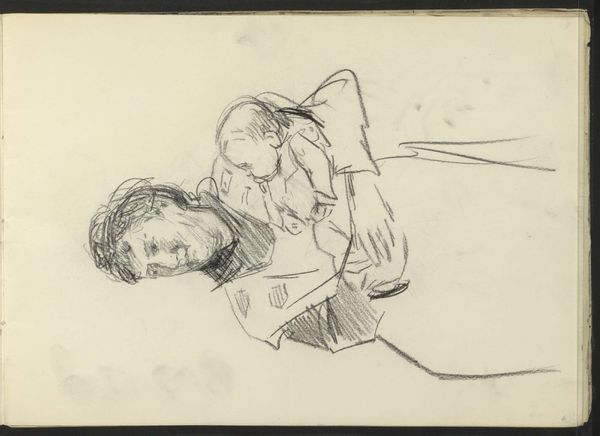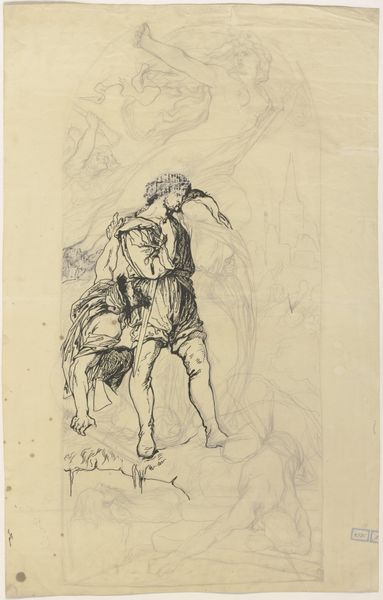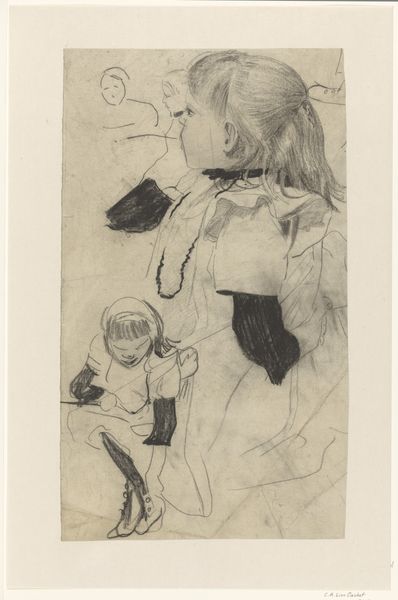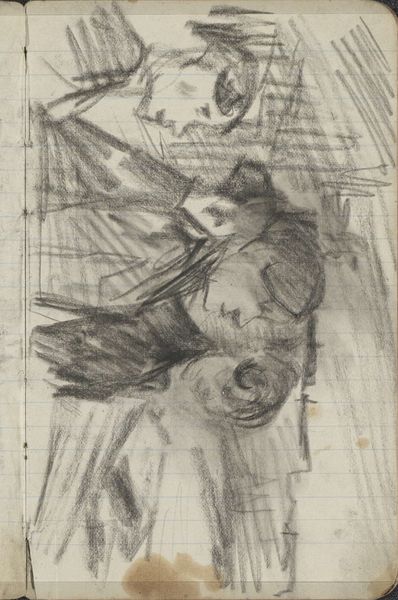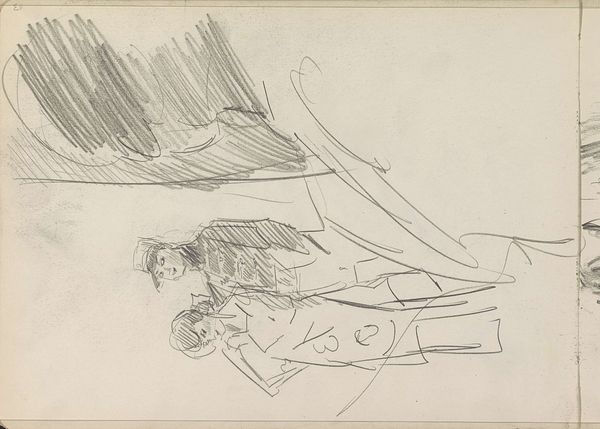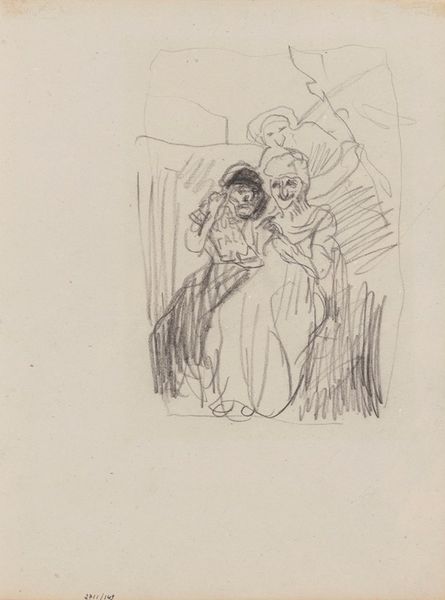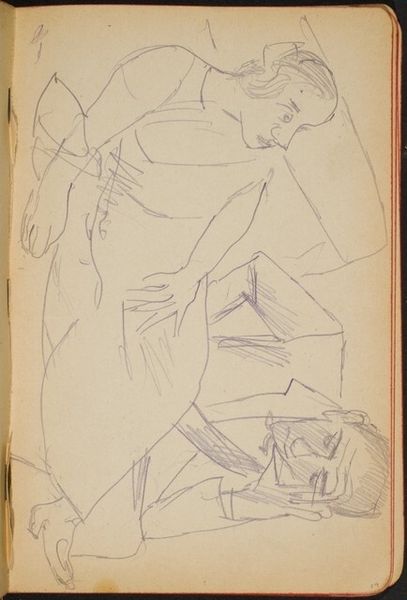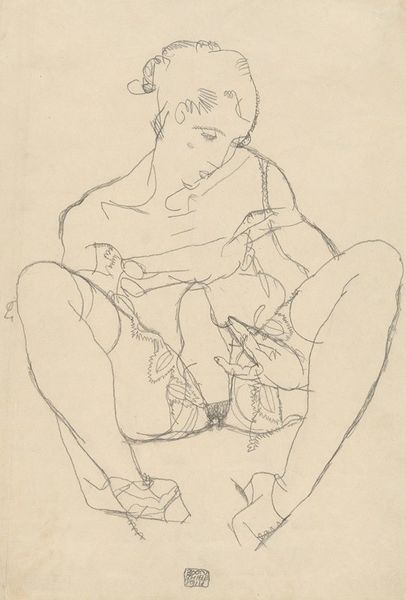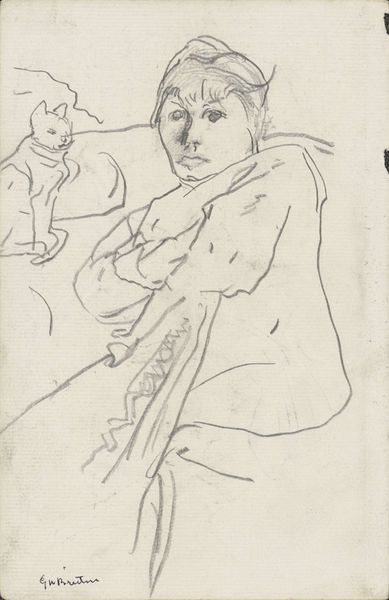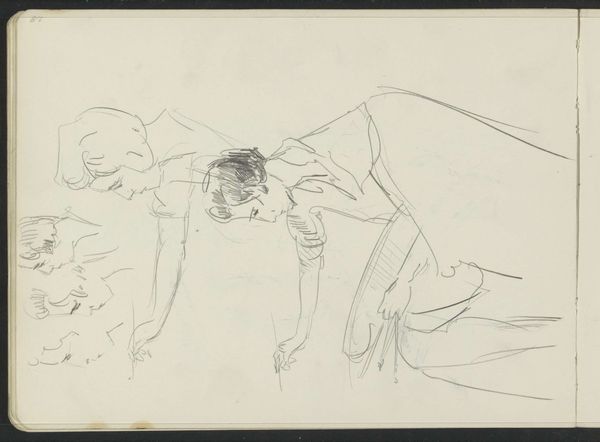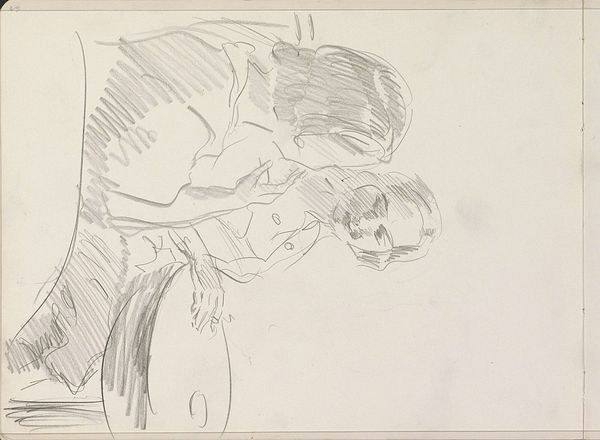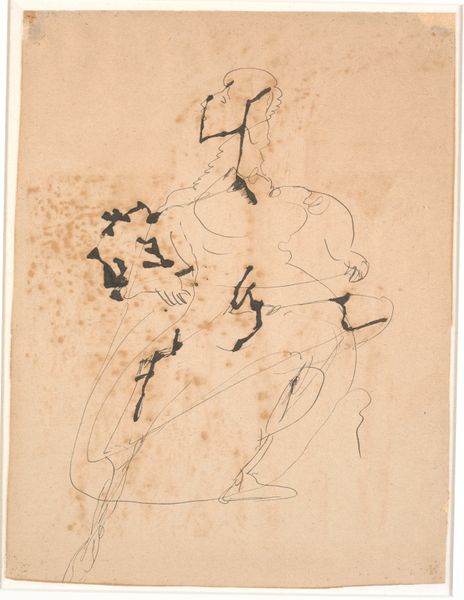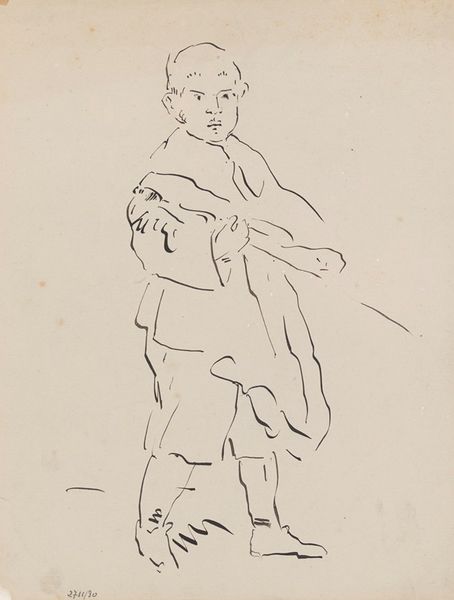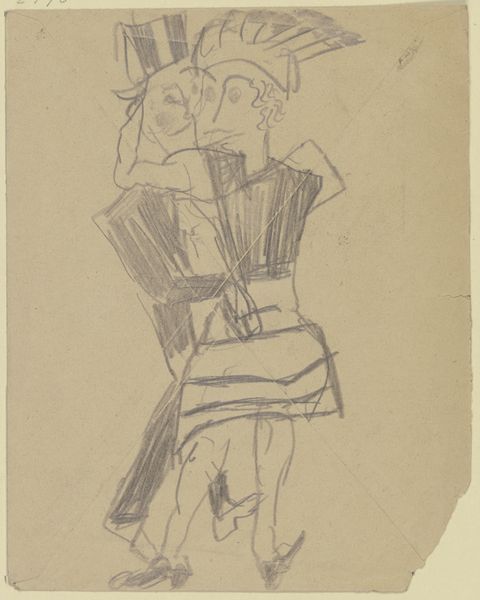
drawing, ink, pencil
#
portrait
#
drawing
#
ink drawing
#
figuration
#
ink
#
pencil
Copyright: National Gallery of Art: CC0 1.0
Curator: Rothko's ink and pencil drawing, simply titled "Two Seated Woman," invites us into a moment of quiet contemplation. There’s a lovely simplicity to the piece. What's your initial reaction? Editor: It's surprisingly raw, even a bit unfinished, isn't it? The density of marks, almost scribbled across the subjects' clothes, especially in the figure closer to us, contrasts sharply with the open space around them. It feels… restless. Curator: Restless is a good word. Rothko's choice of such immediate, accessible materials really emphasizes the process. Think about how radically different it is from the scale and precision we usually expect from him. These lines, the very act of drawing... they're laid bare for us. Editor: And that cheap paper. Let's not forget how humble the material substrate is. The stained edges really drive that home—it's everyday, quotidian even. Makes you think about where he was when he made this, right? Some cheap cafe paper maybe. Curator: Precisely! We know very little about the specific context, but that immediacy connects with something fundamentally human. I see two women, almost as if caught mid-conversation, lost in their thoughts. There’s an intimacy created not by detail, but by a felt sense of presence. Editor: Yes, and think about that intensity, almost crudeness, and the means by which the artist put this composition together. The paper, pencil, ink—mass-produced readily available to the general populace. Was this intended as art or perhaps practice toward something 'more', some future expression of paint? It could have just as easily been used to work out the books for a local business or even the plans of the ruling class. Curator: Ah, the beauty of Rothko leaving us with questions! This drawing becomes less about who these women are and more about how we, as viewers, relate to their quietude and to our own understanding of seeing, making, even feeling the weight of existence. Editor: In a way, by foregrounding process, Rothko is also highlighting the labor behind art, a deliberate, and very modern approach. This contrasts with the elitist idea that drawing, as a medium, can be only a stage in the life of more recognized high-brow art forms. The image leaves the question to the viewer. Curator: And it's precisely that invitation, that unfinished quality, that lingers with me long after viewing. It whispers of vulnerability and shared human experiences. Editor: For me, it is a question of materials as expression in and of itself. These accessible and mass-produced components make art less an object to attain, or even an action of skill, but something altogether accessible to anyone with the wherewithal to create. It feels like an unbridled accessibility and power of that very notion.
Comments
No comments
Be the first to comment and join the conversation on the ultimate creative platform.
